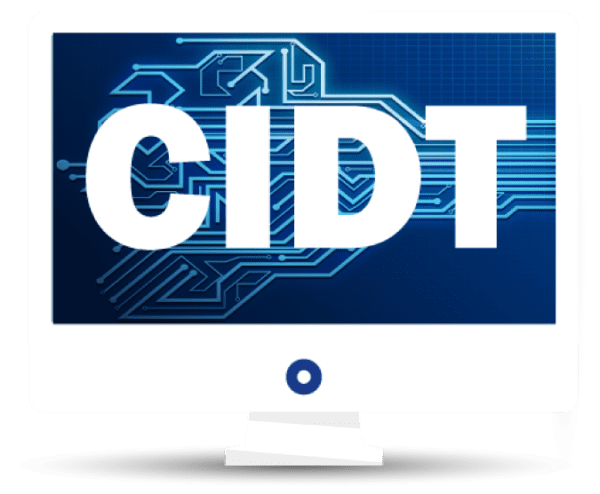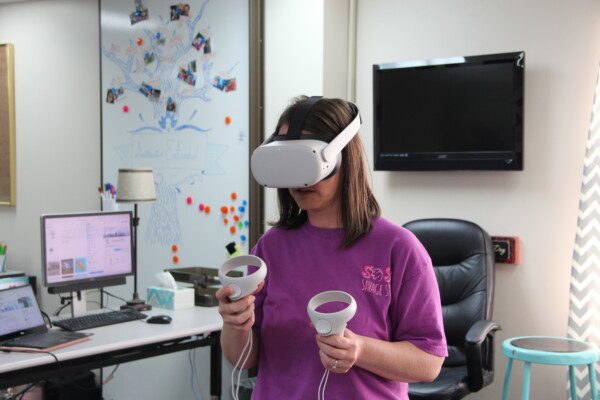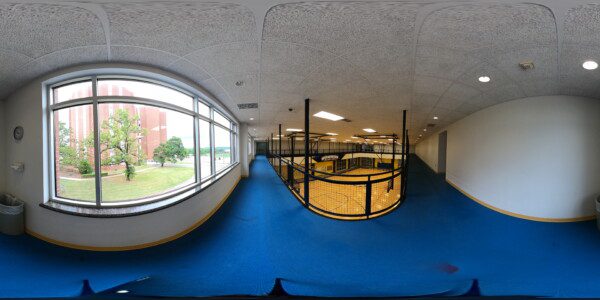Southeastern Oklahoma State University Leverages Virtual Reality for Immersive Learning
 Southeastern Oklahoma State University (SEOSU) is partnering with OneNet to develop 50 virtual reality (VR) and responsive learning modules that will be introduced to all higher education in the state of Oklahoma. This project grew out of a collaboration among the State Regents’ Council for Online Learning Excellence, OneNet and the university.
Southeastern Oklahoma State University (SEOSU) is partnering with OneNet to develop 50 virtual reality (VR) and responsive learning modules that will be introduced to all higher education in the state of Oklahoma. This project grew out of a collaboration among the State Regents’ Council for Online Learning Excellence, OneNet and the university.
SEOSU and OneNet’s goal is to leverage VR technology to benefit in classrooms across Oklahoma. This goal aligns with COLE’s mission to empower excellence in online and hybrid learning experiences through a framework that grows knowledge networks and advances collaborative initiatives. The council works to enhance learning and build success for institutions, students and faculty.
Christala Smith, the director for SEOSU’s Center for Instructional Development and Technology, met OneNet’s executive director Von Royal at a technology meeting, where Ammon Smith with Smith Instructional Design and Technology LLC (Smith IDT) also participated in the discussion about new technologies. Through this engagement, Christala Smith developed her idea to utilize VR technology and 360-degree photography to develop interactive learning modules.
 “Von and Ammon both shared presentations on AR and VR for the Oklahoma Blackboard User Group, which sparked interest in how higher education might be impacted by that technology,” Smith said. “Ammon showed me the updates to Adobe Captivate that allowed 360 images and videos to be incorporated into modules.”
“Von and Ammon both shared presentations on AR and VR for the Oklahoma Blackboard User Group, which sparked interest in how higher education might be impacted by that technology,” Smith said. “Ammon showed me the updates to Adobe Captivate that allowed 360 images and videos to be incorporated into modules.”
The VR and responsive learning modules cover subjects such as chemistry, computing, physical sciences, biology, occupational health and safety, music, criminal justice and communications. The virtual modules will allow students to experience learning environments such as chemistry labs from anywhere. Whether students are participating in online learning or have accessibility needs, the modules will give them the opportunity to experience the classroom in a new way.
The blue print of this project is that student workers are primarily handling the module development by applying skills in 360-degree photography, graphic design, instructional design, accessibility and Adobe Captivate.
Smith IDT is providing training for the students in utilizing the new technologies. These students are accomplishing and are progressing their skillsets in instructional design and VR development. One student, for example, transitioned from the project to a career in instructional design by using the skills he learned through the modules. This generated such a huge success, SEOSU is now planning to offer scholarships to students with these types of technology skills.
Smith expressed how she has seen the students learn and grow through their work.
“The students love that they are learning something new that is challenging and creative,” Smith replied. “They have done a great job at learning very quickly and have enjoyed sharing their work with others and telling people about what they are doing.”
The students produced a video to share their experience and promote the project. Watch the video here.
By utilizing students and faculty, SEOSU’s project design is saving higher education thousands of dollars in development costs. If the university utilized a commercial developer to fully develop these projects, the cost would be in the hundreds of thousands of dollars.
Faculty have played a key role in developing the instructional component. Their participation has reduced the number of hours needed from a commercial development provider. Faculty have shown a high level of interest and passion in making progress toward these advanced technologies.
Smith explained how she recruited faculty for the project.
“I met with the biological sciences, chemistry and safety departments to see which faculty might be interested in creating modules,” Smith stated. “There were faculty in each department who had great ideas of how to build modules for course content. The faculty were very interested and willing to work with us.”

Glen D. Johnson Student Union
In addition to creating the modules, SEOSU is working with COLE to establish an instructional guide that explains how to use the 360-degree camera and Adobe Captivate to develop VR and responsive learning modules. This guide will empower other higher education institutions to replicate the process and seamlessly create their own learning modules. Smith envisions the modules being implemented at institutions across the state.
OneNet will help accomplish that vision. OneNet is providing storage for all of the module source files and facilitating collaborative meetings among institutions. Other higher education institutions will have access to these files to create their own learning modules.
“We plan to help other institutions develop similar modules. In addition, I’d love to see higher education across Oklahoma flooded with these types of modules, for both face-to-face and online students,” Smith answered. “I hope that this technology is used to bring a more interactive, immersive, and engaging learning experiences to classes and help students feel closer to the university and more involved in the learning experiences.”
This project fuels a passion for new technologies for Royal as well.
“OneNet is helping Oklahoma’s higher education institutions take advantage of new technological resources and improve learning opportunities for our state’s students,” Royal said. “Advancing technology is OneNet’s mission, and this project has been a perfect fit in furthering our vision for educational technologies in Oklahoma.”
A new project with COLE grew out this partnership. Through COLE, OneNet is now offering VR technology toolkits that include a 360-degree camera, Capitvate licenses and other equipment to higher education institutions to power the development of learning modules. Southwestern Oklahoma State University, Roger State University, and University of Central Oklahoma are already taking advantage pf the VR toolkits to create new and exciting learning experiences. Oklahoma’s entire higher education system will have the opportunity to benefit from the SEOSU and OneNet engagement.
Story by King Mason, Strategic Communications Intern, Fall 2021
